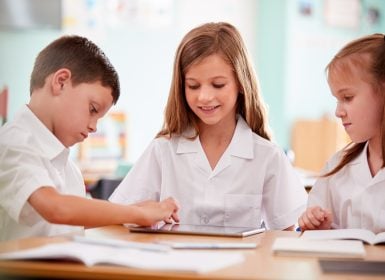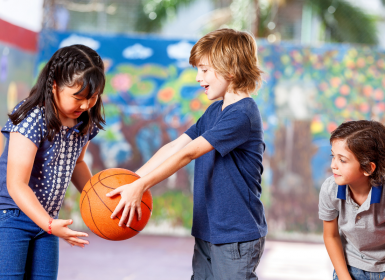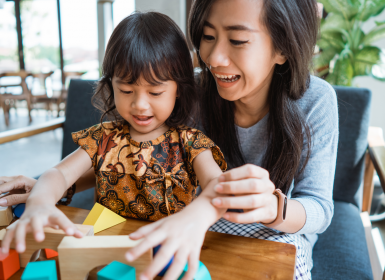As children progress through primary school, the importance of peer friendships and inclusion in playground activities becomes crucial to the healthy development of their social and emotional wellbeing.
When children feel invited, accepted, appreciated, and included they are more likely to perform well at school, have higher self-esteem, and engage in meaningful relationships with both teachers and students.
What is social inclusion?
Social inclusion is two-fold and occurs when children:
- Feel included within their own friendship circles and others in the playground
- Invite and welcome other students into their friendship circles
On a deeper level, social inclusion is the understanding that all individuals are different and should be valued regardless of race, gender, religion, economic background, or ability.
Social inclusion at school
Children’s play experiences change considerably as they progress through school. Their play transitions from associative play in the younger years to co-operative and competitive play during primary school. Through this transition, problems can arise with leadership, group dynamics and communication. This can result in social exclusion of students who are perceived as ‘different’ based on physical ability, appearance, intellectual capabilities, economic status, religion, or cultural backgrounds.
Teachers should support children in understanding and appreciating these differences and teach the skills and attitudes required to play inclusively in the playground. Social inclusion doesn’t mean that students must play with everyone all the time, but they do need to know how to make others feel welcomed and included in the playground.
Being excluded can have significant and negative effects on a student’s physical, emotional, and mental wellbeing. This can result in issues such as lower self-esteem, anxiety, depression, and aggression. To avoid this, it is vital that our children are taught prosocial behaviours as early as possible, such as empathy, teamwork, helping others, communication skills and social acceptance.
Tips for teaching inclusion
While inclusion policies guide all Australian schools, here are some other practical ways to promote and support social inclusion in the playground:
- Swap lunchtime duty with another teacher from a different age group and exchange observations – fresh eyes can often see different ways to improve social interaction and inclusion.
- Encourage children to expand their friendship circles to include friends from different places, eg. classroom friends, close friends, soccer friends, buddy group friends, afterschool bus friends, etc.
- In an effort to get to know different children, challenge younger students to play with two new friends at lunchtime.
- Challenge older children to participate in a lunchtime activity that they haven’t tried before so they open themselves to other possibilities, including new friendships, new dynamics or different groups.
- Teach children how to politely decline an invitation to play using the sandwich approach (positive, negative, positive). An example of this includes:
“Thanks for asking me (positive), but I want to play on the fort right now (negative). I can play tag with you next lunch break (positive)”.
- Promote authentic friendships between children with and without disabilities. Help them understand that they are there as equals to play, connect, interact, and have fun together.
- Encourage and invite families to be involved in learning activities and games from their culture, background, or country during lunchtime. Children love to learn new games and it is a great way to experience a different culture.
- Consider how the one-on-one support you give children with additional needs could have negative consequences for an inclusive playground environment. Be mindful of not sending a message that the child isn’t capable of participating in play with others.
- Introduce games into the playground that promote teamwork and inclusion – consider games that are continuous and don’t involve elimination.
- Help students come up with ways of making their lunchtime games more inclusive, eg. expanding a game to include more players or taking turns in play.
- Consider social consequences with access and affordability when offering lunchtime or afterschool activities where children need to pay to participate.
- Recognise and praise your students’ efforts in displaying social inclusion in the playground.
Where to go for more help or ideas:
NSW Government Office of Sport – Indigenous Traditional Games
More Articles
Subscribe to Learning Links
In our free monthly eNewsletter, you’ll receive interesting articles on learning, development and wellbeing, tips for supporting children at home or at school, program and online learning updates and the latest news from the Learning Links team.




